#bad ethics
Text
i've seen a couple people in the notes of this very good post about fictional polyamory by @thebibliosphere say things along the lines of "oh, i've been doing it wrong :(" or "how do i know if i did this right??" or "i should probably give up and start over, i wrote this badly :(" and. no!!!!
(i AM seeing far MORE people say "oh, this clarified and helped me so much, i think i know how to fix issues i've been having with my own story" which. YES!!!!)
listen. if you're a monogamous person who's writing a polyamorous relationship, and you've been focusing mainly on The Triad and All Three Together All The Time as the endgame, that's literally fine. that's a perfectly acceptable and strong starting point for your plotting, imo. you do not need to give up on a story that you've started like this.
but the things discussed in the post Can and Should improve your execution!
you can keep the same plot beats and overall relationship arc 100%. polyamorous relationships are infinite in their formations, every one is unique. "basically a monogamous romance but with three people" Does exist, as a relationship type. you're not hashtag Misrepresenting (TM) poly people with it
BUT i do think it will help to read up on some poly people talking about how their relationships Differ from monogamous ones.
so i have outlined some basic important concepts about polyamory.
MORE IMPORTANTLY though, i've broken down some questions that you can answer throughout the writing process to strengthen your individual dyad relationships, your individual characterization, & your characters' individual feelings/experiences. this is a writing resource have fun
future kitkat butting in to say i spent over two hours writing this and it definitely needs a readmore. it is also NOT comprehensive. but everything should be pretty simple to follow! feel free to reblog if you find it helpful yourself or just want to reward me for how gotdan long this took KSLDKFJKDL.
i've grabbed quick links for a couple of the important concepts, some have SEO pitches in them but the info largely seems to be good. (if i missed anything Egregiously Gross on these sites i should be able to update the links with better ones later, since they're under the readmore.)
sidenote: this is NOT meant to be overwhelming, despite the length. if you can't read all of this, that's Okay. you do not need to give up on your writing.
here we go:
compersion!
compersion is a BIG thing in a lot of polyamorous relationships. it's joy derived from seeing two (or more) of your partners happy together, or joy derived from seeing your partner happy with someone else.
compersion is really important as a concept because it highlights that every individual relationship within a polycule is different -- and that that's a GOOD thing. it's sort of the inverse of jealousy.
by the "inverse of jealousy," i mean that instead of feeling left out and upset and possessive, you feel happy/joyous/content.
i can use personal experience as an example: it's a Relief for me when my partners receive joy/support/sex/romance/etc that i can't (or prefer not to) give them. and i love seeing my partners make each other laugh and be silly together.
it's 100% okay for a poly triad not to be together 100% of the time, it doesn't mean that the third member is being left out or not treated equally when two people do things alone together.
(i have individual dates with my partners all the time! PLUS larger 3-and-4-person date nights.)
if the third member DOES feel jealous or left out, then the polycule can have a conversation to figure out what needs/wants aren't being met, and solve that. this happens semi-regularly in my polycule, as it will happen in any relationship (including monogamous ones)! it's just part of being an adult, sometimes you have to talk about feelings.
metamours!
a metamour is someone who is dating your partner, but ISN'T dating you. this may not be relevant for people writing closed three-person romantic sexual triads, but it's a super helpful term to know.
the linked article also lists different types of metamour relationships with some fun phrasing i hadn't heard before. the tl;dr is: sometimes you'll be domestic cohabitation friends, sometimes you'll be buddies with your own friendship, sometimes you might not interact much outside of parties, every relationship is different.
there's no one-size-fits-all requirement for metamour relationships. sometimes polyamorous people will end up dating their metamour after a while (has happened to me), sometimes polyamorous people will break up with one partner for normal life reasons, but remain friendly metamours.
the goal of polyamory is NOT for EVERYONE to fall in love. it is 100% okay if this happens in your story, it happens in real life too! but it is also 100% okay for characters to be metamours without ever becoming "more than friends."
(sidenote: try to kill any internalized "more than" that you have when it comes to friendship. friends are just as important and special and vital as partners.)
of course there are a million ways for messiness to occur with metamours within a complex polycule, exactly like with close-knit platonic friend groups. however this post is not about that! there's enough "here's how polyamory can go wrong" stuff out there already, so i'm focusing on the positives here :)
open versus closed polyamorous relationships!
i'm struggling to find an online article that reflects my experience without directly contradicting at least SOME stuff. so i'll give a quick rundown
google has a bunch of conflicting definitions of open relationships and whether open relationships are different from polyamory. the general consensus seems to be that an open relationship prioritizes one partnership (often a marriage), but that each partner can have extraneous flings or long-term commitments (most often sexual in nature).
this is not typically how i use the term wrt polyamory. the poly concept is pretty simple. a closed polyamorous relationship is one with boundaries like a monogamous one. there are multiple partners in the polycule, but they are not interested in having anybody new join said polycule.
an open polyamorous relationship tends to be more flexible -- it just means that IF someone in the polycule develops mutual feelings for a new person, it's fine for them to become part of said polycule if they want to! the relationship/person is open to newcomers.
some groups will need to negotiate this all together, others will just go "haha, you kids have fun." just depends on the individuals!
with open AND closed polyamorous relationships, the most important thing is making sure that there's respectful communication and that everyone is on the same page. but there's no one-size-fits-all way to do that.
i wish i could give you guys a prescriptive "You Must Do It This Way" guide, but that's.... basically the opposite of what polyamory is about, HAHA.
feelings for multiple people!
i was gonna tack this on to the previous section but decided it warranted its own lil bit.
a defining feature (....i'm told?) of monogamous relationships is that a monogamous person only has feelings for One individual at a time. they only want a relationship with one individual at a time. or, if they DO have feelings for multiple people simultaneously, they're still only comfortable dating one person at a time & being exclusive with that one person.
this is perfectly fine!
the poly experience is generally different from this. but once again..... polyamorous people all have different individual perspectives on this.
for me, i have never been able to draw hard boxes around romantic vs sexual vs platonic relationships, & i love many people at once. my personal polycule lacks many strict definitions beyond "these are my chosen people, i want to forge a life with them indefinitely, whatever shape that life takes"
some poly people feel explicit romantic or sexual attraction to multiple people at once, some poly people feel almost no romantic or sexual attraction at all. i'd say that MOST poly people feel different things for different partners, which is not a bad thing!
some poly people are even monogamous-leaning -- they have just chosen one romantic partner who is themselves part of a larger polycule. (so this monogamous-leaning person has at least one metamour!)
or alternatively, they might have one romantic partner AND a qpr, or other ways of defining relationships. (this is a factor in my own polycule!)
i made this its own point because if you're writing a straightforward triad, this is unlikely to come up in the story itself -- but it's worth thinking about how your characters develop/handle feelings outside of their partnerships.
like, is this sort of a soulmateship, 'these are the only ones for me' type deal? in which they won't fall in love with anyone else, and can be fairly certain of that?
that's pretty close to typical monogamous standards but you Can make it work. just be thoughtful with it
alternatively, can you see any of these characters falling in love Again after the happily-ever-after? and how would the triad approach it, if so? what would they all need to talk about beforehand, and what feelings would everybody have about the situation?
it's worth considering these questions even if the hypothetical will never feature in your actual canon, because knowing the answers to these questions will help you understand all of the individuals & their relationship(s) MUCH better.
i've been typing this for nearly two hours and there's a lot more i COULD say because... there's just a lot to say. i'll close out with some quick questions that you can ask yourself when developing the dyad dynamics within your triad
first, take a page and create a separate section for each individual dyad. then answer these questions for every pair:
how does each pair act when alone?
how do they act differently alone compared to when they're with their third partner?
are there any elements of this dyad (romantic, sexual, financial, domestic, etc) that these two people DON'T have with the third partner?
if so, what are they?
are there any boundaries or hard limits within this dyad that aren't shared with the third partner?
if so, what are they?
partner 3 goes out of town alone for a few weeks. what are the remaining two doing in their absence?
(doesn't have to be anything special, it's just to get a sense of how the two interact on a day-by-day basis without the third there)
what is something that each partner in the dyad admires about the other -- that they DON'T necessarily see in the third partner?
what problem do These Two Specifically need to solve in the story before their relationship will work?
how is that problem DIFFERENT from the problems being solved within the other two dyads?
doing this for ALL THREE dyads is VITAL imo. that way, you develop complex and nuanced and different relationships that all have unique dynamics.
those questions should be enough to get you started, i hope
then After you've charted the differences in relationships, you can start to jot down similarities in the overarching triad. what does one person admire in Both of their partners? what are activities that all three like to do together? what are boundaries or discussions that all three share?
but the main goal is to figure out how to Differentiate each relationship!
a polycule is only as strong as the individual relationships within it. if two people are struggling with their own relationship, adding a third person won't fix that.
(UNLESS the third person is the catalyst for those two to, like, Actually Communicate And Work Their Shit Out. i just mean that the old adage of "maybe if we just add a third-" works about as well to fix a miserable non-communicative marriage as, uh, "maybe if we have a baby-")
AND FINALLY.
if you're not sure whether your poly romance reads organically to poly people, you can hire a sensitivity reader with poly experience. if you can't afford that, you can read up on polyamorous resources like a glossary of terms & articles actually written by poly people. (and stories written by poly people!)
you can also just.... ask poly people questions, if they're open to it. i like talking about polyamory and my own relationships so you're welcome to send asks if u want, i just can't guarantee i'll answer bc my energy levels fluctuate a lot and i don't always have time.
polyamorous people are in an uphill battle for positive representation right now & so the LAST thing i want to see is authors giving up on their stories bc they're worried about getting things Wrong. well-meaning and positive stories that treat this kind of love as normal, healthy, & aspirational are So So So Needed. even if you guys end up with some funky-feeling details.
seriously, if you're monogamous then you probably don't have a full idea of Just How Nasty a lot of people can get about polyamory. i wish it DIDN'T mean so much for you guys to want to write nice stories about us, but it does mean a lot. and it means a lot that you want to do it WELL.
in conclusion. this is not a prescriptive guide, it's just a way to raise questions. and also, you all are doing FINE.
#thebibliosphere i apologize for tagging u when we don't know each other at all i just want u to get credit for the initial discussion#given that it is so much more thoughtful and clear than anything i'd think to write.#i did NOT mean to spend multiple hours on this but once i started writing i was like#oh god i actually do have like a lot i can tell monogamous people about writing poly people & the poly perspective#anyway. i mention it in the post but people can send me (respectful. obviously) asks if they have questions#i cant promise to answer all of them bc i am bad at this. but if i'm well enough then i'll try#polyamory#non-monogamy#ethical non-monogamy#writing#my writing#writing advice#relationships
3K notes
·
View notes
Text
Maybe this is me just trying to articulate the same thing over and over in different ways, but I think some people in fiction (fanfiction and original fiction) circles have overcorrected and basically ended up at "all writing is value-neutral and nothing that is written is bad and nobody ever has the right to tell anyone not to write anything ever and we can never criticize old books with modern sensibilities."
And I think we should figure out how to have a useful and nuanced conversation about the fact that some things are bad and probably shouldn't be put out in public. And that's not me saying that anyone should be drawn and quartered or or harassed or cancelled or whatever. But we have to be able to think critically of writing and get past the knee-jerk reaction that any criticism ever is purity culture or censorship or conservativism in a gay hat.
#ethical writing#this also requires the recognition#that not all criticism is saying the thing shouldn't exist#not all criticism is saying the author is bad#and saying “this probably shouldn't be given a platform” is not actually censorship
545 notes
·
View notes
Text
happy halloween! i did my annual re-animator rewatch and once again had to edit the most transgender character to ever exist
#happy reanimator day! shout out to herbert west. that son of a bitch was so transgender and so bad at ethical experimentation#reanimator#reanimator 1985#herbert west#🎪
812 notes
·
View notes
Photo

you join the cafe & meet the crew (minus one)
#hashiart#undertale#undertale au#utmv#sans#bad sanses#nightmare's gang#dusttale sans#dust sans#killer sans#killer!sans#horrortale sans#ht sans#nightmare sans#cursed coffee shop au#guys don't actually apply here youre going to get stuck with all the work cause you know these dudes aint gonna do it right#Horror going by Skull because HR has advised that we don't refer to our colleagues by names that could potentially result in an HR disaster#aka corporate has overheard horror as whorer and they are doubling down to avoid ALL possible confusion#it has taken the gang multiple tries to pass the ethics and workplace harassment classes (nightmare had to forge paperwork in the end)#killer is HR's worst nightmare which is saying something considering nightmare is literally right there#nightmare is going to do his best to delay the inevitable introduction to killer (unstoppable force meets immovable object)#who would be your work bestie tho real talk#all of these are posted on a queue so by the time you see this it's going to be a few days :)
1K notes
·
View notes
Text
One of the most common failure modes of deontological systems of ethics is the valorisation of bad outcomes. When actions are held to be inherently good or bad regardless of their outcomes, the willingness to accept demonstrably horrible outcomes in order to behave virtuously can itself come to be seen as virtuous; and, moreover, the worse the outcome, the greater the virtue demonstrated thereby. Left unchecked, this way of thinking can, and often does, lead to the perverse conclusion that those whose actions yield the worst outcomes are the most virtuous.
This, ultimately, is why media like Breaking Bad will inevitably be received as celebrations of the very ethoi they purport to critique by their adherents. When Walter White’s cracked funhouse mirror version of traditional masculinity repeatedly leads him and everyone around him – including those he claims to be protecting – to bad ends, his persistent refusal to reevaluate his behaviour is seen not as evidence of the moral bankruptcy of Walter’s ethos, but as evidence of Walter’s own moral courage. In this essay
3K notes
·
View notes
Text
My friend got me the Exquisite Exandria cookbook and I got it in the mail yesterday and found this REDACTED RECIPE 😂😂

#that is so funny haha the whole thing is rly cute#some good recipes too#critical role#stands outs include#Bad Aim Chicken#Pocket Bacon#caduceus’s Ethically Sourced Mushroom Toasts#The Meat Man Hoagie#I just listed some of the goofy ones but there’s some rly cool recipes in here#i made the Estheross ginger cookies last year and they were a huge hit#excited to try this stuff
508 notes
·
View notes
Text
"Anyway, it'll be int'resting to see if it works."
"Yes, but it's wrong," said Granny.
"Not for these parts, it seems," said Nanny.
"Besides," said Magrat virtuously, "it can't be bad if we're doing it. We're the good ones."
"Oh yes, so we is," said Granny, "and there was me forgetting it for a minute there."
Terry Pratchett, Witches Abroad
#granny weatherwax#esme weatherwax#nanny ogg#magrat garlick#witches abroad#discworld#terry pratchett#witches#ethics#morals#context#local#negotiation#good and bad#justification#we're the good ones#forgetting
153 notes
·
View notes
Text
Not to be controversial but the way some feeders expect feedees to eat is nothing short of unhinged and I don't mean that positively lol. Maybe I'm just too soft but why do some feeders think it's genuinely sustainable for the average feedee to eat like 10,000 calories a damn day EVERY day? To eat literally Everything in their house regardless of grocery funds or other people living with them? To order out Every Single Fucking Day like that shit isn't crazy expensive? Think it's genuinely sustainable to be stuffed to the point of pain at Every meal ever?? Idk man sometimes I feel like some feeders get so horny they forget to think with their brains and acknowledge that most people don't have the resources, funds, or physical capability to perform some of the things the hard-core gainers in this scene do and it's really irritating to navigate around lol
#ethical feedism#not to mention that some gainers prefer going with the flow#and then will get nasty anons complainijg that they lost weight#boy if you dont get the fuck on?? hello???!?#youre literally just as bad as normies that complain when skinny ppl casually gain a little
427 notes
·
View notes
Text
I'm really not a villain enjoyer. I love anti-heroes and anti-villains. But I can't see fictional evil separate from real evil. As in not that enjoying dark fiction means you condone it, but that all fiction holds up some kind of mirror to the world as it is. Killing innocent people doesn't make you an iconic lesbian girlboss it just makes you part of the mundane and stultifying black rot of the universe.
"But characters struggling with honour and goodness and the egoism of being good are so boring." Cool well some of us actually struggle with that stuff on the daily because being a good person is complicated and harder than being an edgelord.
Sure you can use fiction to explore the darkness of human nature and learn empathy, but the world doesn't actually suffer from a deficit of empathy for powerful and privileged people who do heinous stuff. You could literally kill a thousand babies in broad daylight and they'll find a way to blame your childhood trauma for it as long as you're white, cisgender, abled and attractive, and you'll be their poor little meow meow by the end of the week. Don't act like you're advocating for Quasimodo when you're just making Elon Musk hot, smart and gay.
#this is one of the reasons why#although i would kill antis in real life if i could#i also don't trust anyone who identifies as 'pro-ship'#it's just an excuse to shut down legitimate ethical questions and engaging in honest self-reflective media consumption and critique#art doesn't exist in a vacuum#it's a flat impossibility for it not to inform nor be informed by real world politics and attitudes#because that's what it means to be created by human hands#we can't even make machine learning thats not just human bias fed into an algorithm#if the way we interact with art truly didn't influence anything then there would be no value in it#just because antis have weaponized those points in the most bad faith ways possible#doesn't mean you can ignore them in good faith#anyway fandom stans villains because society loves to defend and protect abusers#it's not because you get the chance to be free and empathetic and indulge in your darkness and what not#it's just people's normal levels of attachment to shitty people with an added layer of justification for it#this blog is for boring do-gooder enjoyers only#lol#knee of huss#fandom wank#media critique#pop culture#fandom discourse
191 notes
·
View notes
Note
I consume your art on the daily as a way to make my great lord of despair happy. May I see Gerald Munroe in your style? I need to add him to my palette. 🎨

give him his cinnabon
#okay draw another request and THEN i get to draw boy jerry.. i wanna draw boy jerry..#what if i draw boy jerry instead of this request.. no no no i have to draw a request first.. but boy jerry. he Calls to me#id in alt text#gerald monroe#hatchetfield#definitely art#i enjoy gerald#but my work ethic is so bad right now
235 notes
·
View notes
Text
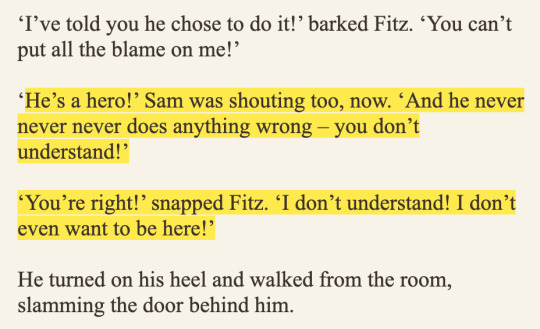
(revolution man; book 21)
vs
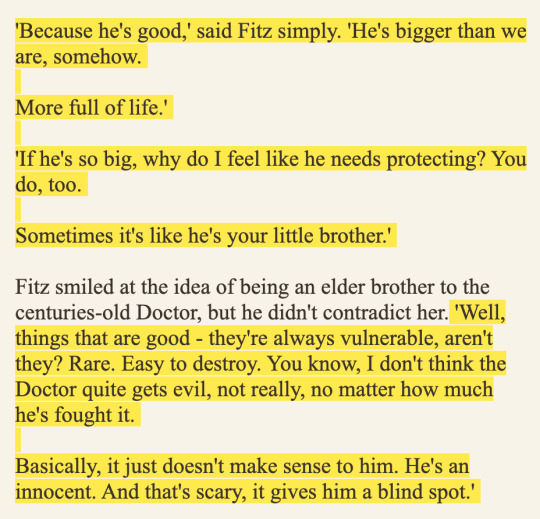
(city of the dead; book 49)
the doctor is literally a glue trap that fitz got stuck in. don't pull him out though because he likes it there
#this juxtaposition is driving me insane a little bit though#like the way sam views the doctor as a staunch upholder of. idk. ethics and morality#as a 'hero' essentially - as she puts it#while fitz perceives him more like an innocent. a bystander. an 'innocent'#if he does something bad it wasn't his fault/the bad thing wasnt even that bad really/the circumstances made him do it but regardless#the doctor is someone who needs protecting#the doctor is a honeyed pitcher plant that smells so so sweet that sam and fitz both fell hook line and sinker for i fear#oh well. many such cases.#doctor who#edas#fitz kreiner#sam jones#eighth doctor
124 notes
·
View notes
Note
Sorry about the color mix up. I appreciate the reply and additional info! I guess bc I know nothing about peafowl (and the fact i dont breed any type of animal), I'm having a hard time understanding how being sterile would be unethical. I do somewhat get the shortened life span. I really would like to understand this, I just sometimes need stuff explained like I'm 5.
Up front, there's no "somewhat get" to a shortened lifespan being caused by a mutation in captive populations. If an animal is capable of living 20+ years (and some live 30+ or even 40+!) and some non-essential mutation is causing them to live 7-9 years, it's flat out absolutely unethical to breed that mutation, full stop, regardless of anything else going on. That's indicative of a MAJOR problem in their genetics. There's NO ethical reason to breed that because humans like how it looks. So, even without the sterility, these birds would 100% be unethical to produce.
The short answer on sterility is this: we don't know WHY they are sterile, but they shouldn't be, and that means something has gone wrong. When something goes wrong with an animal, and it's something genetic that can be passed on, the ONLY responsible and ethical thing for a breeder to do is to stop using that animal for breeding and closely monitor any already-produced offspring for signs of the problem, and likely not breed them, either.
The longer more complicated answer is this: sometimes it's possible to separate the problem from the aesthetic when it comes to morphs, like it was for cameo + blindness, but sometimes it's NOT, like it wasn't for spider + head wobble for ball pythons. In those instances, it's... difficult. Because you're LIKELY going to produce animals that suffer the same problem as their parent(s), in the attempt to separate the problem from the aesthetic, and sometimes that's ALL you're going to produce. As a breeder, it's your absolute responsibility to NOT release the offspring into the general population, where the problem may be replicated without control, and to keep or cull the affected individuals if the problem cannot be separated from the aesthetic, or AT BEST find them guaranteed pet-only homes that will NEVER breed them.
Sometimes the problem IS purely aesthetic or harmless, like it was for pied in peafowl, and sometimes it's not, like it was for vitiligo in peafowl. The problem comes when you ASSUME a mutation is the first, and treat it like the first when it's really the second. This has caused FAR reaching consequences in the peafowl community, and I'm sure in others, where now the autoimmune disease that first bronze had has been passed into genpop by folks who thought they were breeding a harmless new variation of pied. Hybrid animals are often sterile (not in peafowl though, hybrid cristatus-muticus birds are fertile) because of a mismatch in chromosome pairing numbers, and often that's harmless. So, in some cases sterility is not an issue because it's the expected result or is otherwise harmless... but in the case of peafowl, it's NOT an expected result and we don't know if it's caused by something harmless or not.
Some species, like mice and horses and cattle and dogs, genetic testing and DNA mapping done with millions of dollars has proven that while some stuff isn't purely aesthetic, it also doesn't cause harm to the animal in a way that affects quality of life or that can be adapted for in captive care. For example, in chickens, the frizzle gene causes curled feathers in single copy and an absence of feathers in double copy. This gene is considered ethical to produce IF the breeding is done responsibly by putting a single copy bird over a zero copy bird, which produces smooth coats and frizzle coats, but it is unethical to produce double frizzles (called "frazzles") because frazzles cannot thermoregulate, can easily sunburn, and easily suffer skin injury during normal chicken activity.
For peafowl, we have NO genetic testing. We do not have the genome mapped. As far as I know there's a research group working on it (mostly for green peafowl though, in conservation efforts), but that's not remotely finished or available to the public to test anything. We don't know where any of the morph mutations sit, or what is causing them or if they do anything beyond just change the color. Sometimes color mutations are the result of malfunctions in enzymes. For charcoal specifically, we don't know what the mutation does, besides what we can observe on the outside- the birds have half or less the lifespan of normal birds, poor feather quality, and the hens are sterile. Is the sterility harmless like it is in some hybrid animals, or is it actually a major organ failing? Is it the only major organ that fails due to this mutation, or is it just the first sign of their shortened lives? Is it some deficiency in something the birds need to be healthy? Does it hurt the bird? We don't know, but we do know the mutation and the problems (multiple, please do NOT forget that this is one OF MORE THAN ONE problems) can't be separated, and so until we do know why and whether it's harmless or not, the ONLY ethical response to seeing a problem in a major organ's function linked inextricably to a mutation in color is to not propagate that mutation. If someone wanted to fork over the millions it takes to sequence and map genomes and then determine exactly what is going on with peafowl, that would be nice and good, but I don't see that happening. When I win the lottery big, I'll be doing it, but til then we can only follow normal breeding guidelines
Also, to put this into perspective... peafowl mature sexually around 3 years old. They are chicks until the turn of the new year following their hatch. They are yearlings that year, and immature 2yo next year. They aren't actually considered fully grown until 6 years old, and should live another 14+ years. Charcoal birds die a 1-3 years after full maturity. Is it a coincidence that they fail to thrive shortly after full sexual maturity, or is it linked? Again, we don't know. We don't know if the sterility is fine or if it's just a symptom of something worse.
Even without the sterility, though, charcoal has enough issues it would be unethical. If it was JUST sterility, with no other deleterious effects, then maybe it would be different. But it's not.
#peafowl#asks#anon asks#as always please bear in mind that animal breeding is NOT the same as human reproduction ethics#and I ONLY deal in animal ethics#and honestly even if it was just shit feather quality then I would personally consider it bad breeding#I asked the only person I know who still has charcoals what their issues were and lord it is worse than I thought even#she's keeping/breeding only what she can keep herself#and experimenting with feeding regimens in the hopes of correcting a nutritional deficiency#that might account for the sterility#but so far after like 10+ years she's had no luck#so it's not likely#Like there are SO MANY perfectly fine and healthy morphs out there#there's NO reason to keep making this one#it's not essential to the continuance of the species#also to anon: I'm not mad at all this is just how i sound about my special interest#I'm glad you asked questions#I appreciate you seeking info
109 notes
·
View notes
Text

As a lifelong Taylor Swift & The 1975 stan, this album was …a lot to digest 🫠 My initial thought of “I should print out the lyrics so I can learn the songs faster” turned into a bigger project than I intended but I’m OBSESSED with the outcome 🤩
Typeset was made by me ☀️
Lyrics and content obviously made by Taylor Swift ✨
The patches in the front cover pocket were designed by @reputayswift 💕
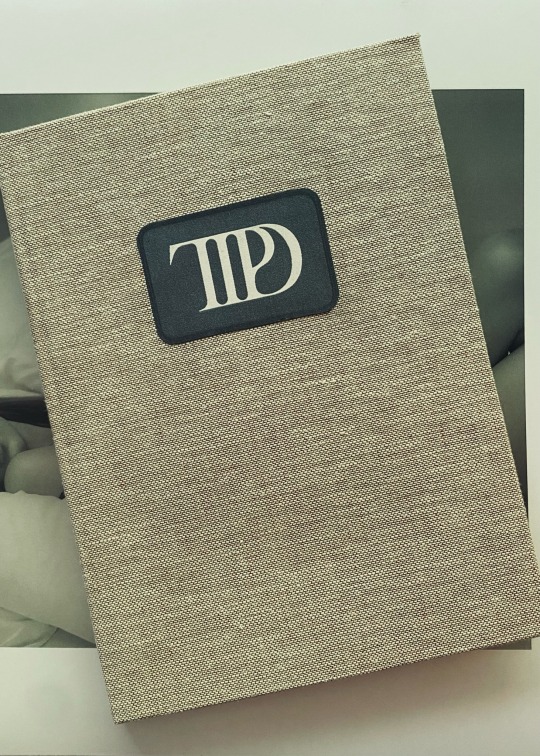
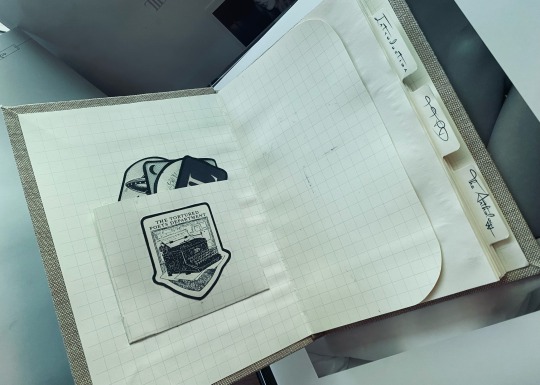




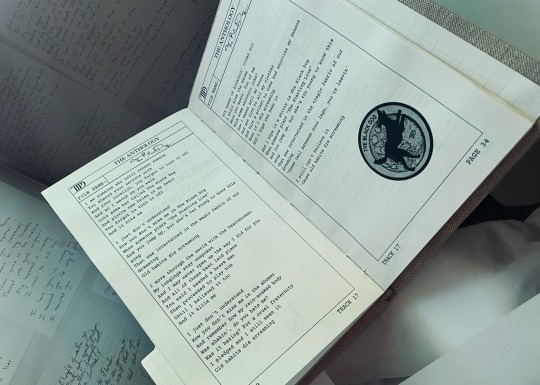
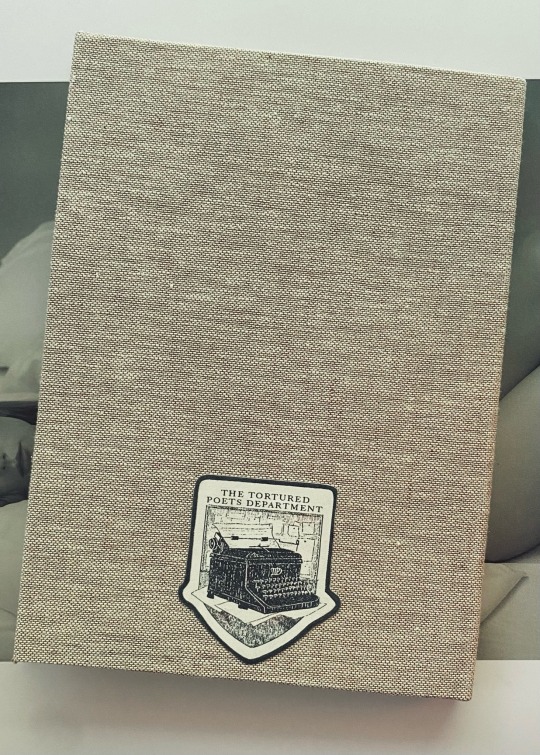
#in canva we trust 🫡#don’t even get me started on the implications of this album to me as a marauders fan 🫣🐾🌙#ttpd#ttpd lyric book#the tortured poets department#ttpd fan art#bookbinding#the black dog#down bad#Taylor swift#ttpd patches#Clara bow#mine#I know that there are no ethical billionaires and her carbon emissions are insane but I’m still stanning
81 notes
·
View notes
Text
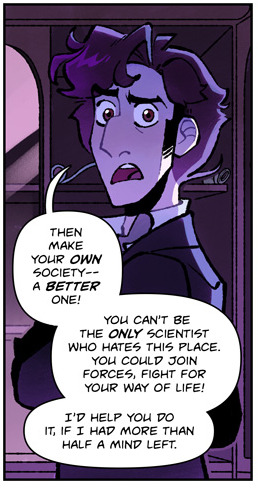
Henry, dear, sweet child, this is an awful idea. DO NOT tell this woman to basically form her own Sinister Six.
#Look...it's really hard for me to be on Frankys side when her entire scientific thing was like 15 wild mistakes in a row XD#you know...sometimes you gotta draw a line in the sand and say the science isn't worth it/ethical...XD#I'm not saying she's a bad person just that she is science at it's most reckless XD and with like no excuse#you don't want a team composed of Dr Septimus Pretorius's#the glass scientists#glass scientists
70 notes
·
View notes
Text
just want to remind everyone how fucked up it is that students at aguefort are quite literally dying to save their grades. and this is a system the school actively has kept in place. and this is just... normal.
#like its one thing for the bad kids to full on die adventuring because they're going way above and beyond but like??#other NORMAL students take this test!!!!! hello!!!! WHY IS THIS ALLOWED#not to be a party pooper or anything bc i'm greatly enjoying the combat but still#love you AAA but you are sooooo fucked up ethically <3#d20#dimension 20#fantasy high#fantasy high junior year#fireflyskie
76 notes
·
View notes